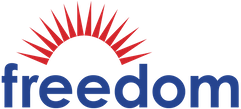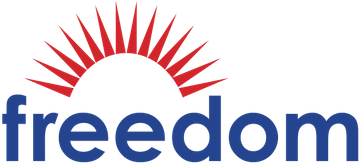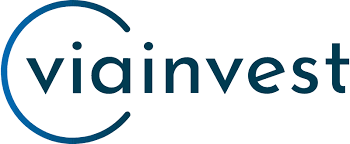DEBT HELP
How to Pay off $25K in Debt Using Tried-and-True Methods

Using Your 401(k) to Pay Off Debt is Risky: Here’s Why
No matter the amount, there’s nothing quite like the weight that debt bears.
It can be downright exhausting.
I know the feeling. Just four years ago, my wife and I set out to figure out how to pay off debt — nearly $30K’s worth — within the 16 months leading up to our wedding.
The good news was that we weren’t alone in wanting to become debt-free — and neither are you.
Thankfully, what worked for us has worked for others trying to get out of debt as well. Here’s a roadmap of steps you can take to make it work for you, too.

Quick Summary
Resolve your debt in as little as 24 – 48 months.
- Over 600,000 customers and counting
- They’ve helped save their clients over $10 billion
- Free credit card debt relief consultation
Visit Freedom Debt Relief In this article
- Money in, money out
- 5 options to pay off debt
Money in, money out
The first step is knowing precisely what you owe. That means sitting down and tallying up all your debt and loan payments — student loans, auto loans, however much you owe the credit card companies, etc.
But there’s more than just knowing how much debt you have — you need to have a clear understanding of your entire financial picture so you can be proactive rather than reactive.
You work hard for the money you bring in, there’s no doubt about that. So it’s important to know exactly where every penny of it is going. Once you start tracking all your spending, you can establish how much you can throw at debt each month.
That’s where budgeting comes into play.
1. Create a budget
A budget is perhaps the single most important tool in managing your personal finances, especially when it comes to paying off debt. It sometimes gets a bad rap, but if you want to gain control over your finances, this is a powerful first step.
It’s not just about restricting your spending when money is tight. It’s also about knowing where all your hard-earned money is going each month.
Luckily, there are plenty of free tools out there to help you track expenses, whether it be a printable planner, a spreadsheet template, or an online budget planner like Mint.
It does takes a little prep work in the beginning to learn how much you spend on average — fuel costs, medication costs, groceries, car payments, etc. — but once you identify your necessary expenses, it will be easier to budget for each accordingly.
My wife and I used what’s called a zero-based budget, which gives every dollar a function so your expenses match your income at the end of each month, equalling zero.
Following this type of budget means if you earn $3,000 a month, you’ll want every expense to add up to $3,000. This includes savings (starting with an emergency fund), investments, charity, and debt repayment. Everything.
If, when you get to the end of the month, you have any money left over because you spent less than budgeted, you throw all of that at your debt as well.
Your Smart Financial Assistant
 Visit Digit
Visit Digit
Digit Benefits
- Save the perfect amount every day without having to think about it
- Try Digit free for 30 days
- Build your savings without changing your lifestyle
- Over $1,000,000,000 securely saved
Visit Digit
2. Minimize your spending
If you’re determined to pay off your debt — there’s no way around it — you’ll need to make some cuts to spend less than you’re bringing in. Even if the debt doesn’t stem from overspending, being disciplined enough to cut back on expenses aggressively is one key to overcoming it.
Go over your budget, line by line, and identify areas where you can make some cuts. Maybe you stop for coffee every morning before work. Why not make it at home? Have a gym membership you pay for but barely use? Drop it, and give working out at home a shot.
Whatever it is, ask yourself if you really need it in your life right now. Perhaps buying that morning cup of coffee brings you happiness — that’s completely okay. Keep it. But identify other areas you might be able to cut, and put an end to it. Finding a balance between what stays and what goes can help you stick with debt repayment without sacrificing your happiness.
There are also ways you can save money on stuff you need to buy. For instance, I use Ibotta or Fetch after every grocery trip to receive cash back on everyday purchases. All it takes is a picture of your receipt and a few minutes of your time.
Rakuten (formally Ebates) is another good way to save when shopping online. It offers cash back when you shop like normal on many sites and then activate the cash back offer. When you’re ready, you can cash out your earnings to PayPal, and then throw that money at your debt.
Some of the best credit cards also basically give you a discount by paying you cash back on your purchases. But this way to save money should only be used if you can pay your credit card payment in full each month. Otherwise credit card interest will cost you more in the long run.
Earn Cash On Everyday Purchases
 Visit Ibotta
Visit Ibotta
Ibotta Benefits
- Earn $10 for signing up and redeeming your first receipt
- Get cash back on normal, every day purchases
- Works great at grocery stores and pharmacies!
Visit Ibotta
5 options to pay off debt
Juggling $25,000 of debt can be stressful to manage, whether it’s student loan debt or an expensive car loan. But you may be able to chip away at the debt faster by combining your loans or using one of these classic debt repayment strategies.
1. Consider the debt snowball approach
The debt snowball method is a repayment plan that focuses on how you can benefit from a psychological boost while paying off your debt.
Here’s how it works
First, list your debts by balance, from smallest to largest. This will give you an idea of which ones you should tackle first.
Using this approach, you’ll throw every penny you can at the smallest debt. For all the other debts, make only the minimum payment on each one.
When the smallest is eliminated, roll that entire payment to the next smallest debt. Continue to make only the minimum payment on all the other debts, and repeat until each debt is paid in full.
Advocates of this method see the quick progress of paying off your smallest debts first as a motivator to keep you on track until you’re free of debt.
Who should use this method
Managing Debt on a Teacher’s Salary Is Possible: Here’s How To Get Debt Relief
If you think you’ll have a hard time staying on track and want quicker accomplishments, the snowball method might be a good payoff plan for you. Just keep in mind it may result in paying more interest over time. This is because you’ll be paying toward the smallest balance first instead of focusing on the interest rate. For a more cost-effective debt payoff strategy, consider the debt avalanche method.
2. Tackle high-interest debt first with the debt avalanche approach
The debt avalanche method is similar in ways to the debt snowball method, but instead of focusing on repaying the smallest debt first, you focus on the debt with the highest interest rate instead.
While making the minimum payments on all other debts and working toward paying off high-interest debt first, you’ll target the debts likely costing you the most money in interest payments.
Here’s how it works
Just like the debt snowball method, you’ll want to make a list of every debt you owe. Only this time, order them from higher interest rate to the lower interest rate.
Following this approach, you’ll want to focus every cent you can muster on the debt with the highest interest rate. For all the other debts, continue to only make the minimum monthly payment.
When the highest is wiped out, roll that entire payment to the next biggest debt as you continue to make only the minimum payment on the rest. Repeat until each debt is paid in full.
This method is a more cost-effective debt repayment strategy because less interest is paid in the end, and the repayment of the principal amount happens quicker.
Who should use this method
If you have all the motivation you need and don’t need to rely on the “small wins” of wiping out your lowest debt early, the debt avalanche method can save you money and time, making it a more cost-effective debt repayment strategy.
3. Start a side hustle to throw more money at your debt
I know, work away from work. But it’s not forever.
If you have the time and can manage a second job, you’ll be able to throw extra money at your debt. Plus, some ways to make money can actually be fun. Combine this with any debt repayment strategy and you’ll be a force to be reckoned with.
Any part-time job can help, whether it’s delivering pizzas or walking dogs with Rover. No job should be beneath you if you really want to pay off this debt.
You can start small with survey sites like Survey Junkie (I use this one myself), then throw your earnings at your debt. This obviously won’t bring in a ton of extra funds, but every little bit helps.
With Uber Eats you can deliver food across town whenever and wherever it works for you and get paid. Just download the app and upload your documents — once you’re notified that you’re “active,” you can start earning!
4. Do a balance transfer
Balance transfer credit cards can be a powerful option because you can temporarily halt your interest payments while you continue to attack your principal balance.
The key to balance transfer credit cards is they typically offer a 0% introductory APR for several months. This allows you to catch your breath and transfer over balances from accounts with higher interest rates, which can result in pretty significant savings.
Keep in mind, however, that when the introductory period ends, the APR will likely increase, and this rate is often higher than other credit cards. So make sure as you’re looking through the best balance transfer cards that the introductory period aligns with your debt repayment timeline. You can determine this through your budget once you know how much you’ll be able to throw at your debt each month.
Who should use this method
It depends on your financial health and your situation, and your credit report is a major factor. If you have a great credit score, you may qualify for some of the best balance transfer credit cards out there.
These typically give you a 0% introductory APR of anywhere from 15 to 21 months. If, however, your credit is struggling, you may only qualify for an introductory period of six months.
A balance transfer credit card is an option that deserves attention. If you have the means to pay off your balance within the introductory period, a balance transfer credit card may be very beneficial.
Earn Cash Back Twice
Citi Double Cash Card

Citi Double Cash Card
Learn How to Apply
Annual Fee
$0
Rewards Rate
up to 2% cash back
Benefits and Drawbacks
Benefits
- 0% intro APR on balance transfers for 18 months
- 2% cash back on all purchases – 1% when you buy and 1% when you pay
- No annual fee
Drawbacks
- Foreign transaction fee
- No sign-up bonus
Card Details
- Earn cash back twice: 1% when you buy + 1% when you pay
- up to 2% cash back on all purchases: 1% as you buy and 1% as you pay
- Intro balance transfer 0% offer: 0% for 18 months then 13.99% to 23.99% (variable)
5. Take out a personal loan
Borrowing more money may seem counterintuitive, but depending on your circumstances, taking advantage of one of the best personal loans could be a good option for paying down your debt.
While balance transfer credit cards provide a promotional period of charging little to no interest, if you don’t pay off the balance within that time, the remainder will be subject to the card’s ongoing APR, which could be higher than other cards.
Personal loans offer more flexibility in that regard.
Depending on your credit, the interest rate of a personal loan could be lower than a credit card’s standard interest rate, potentially reducing the amount of interest overall. If it isn’t lower than the interest rate you’re currently paying, however, consolidating debt with a personal loan might end up costing you more in the end. Keep this in mind when researching loan options.
Who should use this method
Personal loans can provide more flexibility than some other options because you receive a lump sum in your bank account to pay off your lenders. But again, having good credit could help you qualify for a low interest rate.
Great for Over $20K in Debt
 Visit Freedom Debt Relief
Visit Freedom Debt Relief
Freedom Debt Relief Benefits
- Recommended for debts $27,000 and higher
- Resolve your debt in as little as 24 – 48 months
- They’ve helped save their clients over $10 billion
- Over 600,000 customers and counting
Visit Freedom Debt Relief
How to Negotiate Medical Bills Without Losing Your Sanity
Unmasking Online Deception: An In-Depth Social Catfish Review
Purple Garden Psychics – ($1/Min) FREE Trial Offers, Real Experience & Benefits And More

Refinancing an Auto Loan: How to Know If It’s a Good Idea

Reverse Mortgages Pros and Cons: Ripoff or a Good Idea?

8 Ways it Just Got Easier to Achieve Student Loan Forgiveness
Unmasking Online Deception: An In-Depth Social Catfish Review

Orchard Bank Credit Cards | NOT a Scam!

PrivacyGuard Review

How to choose where to study as an international student


